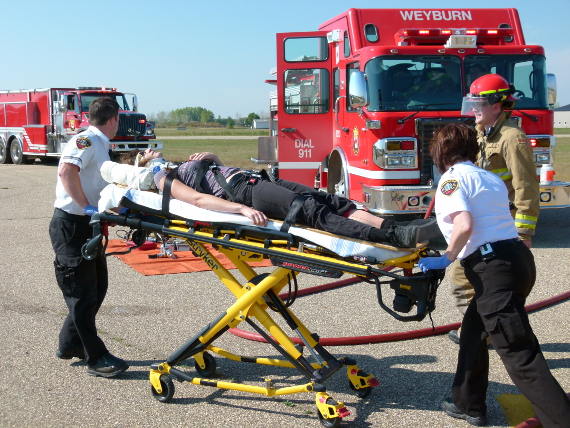With everyone doing things a little differently in our society to stop the spread of COVID-19, some might be wondering how EMS workers are handling their jobs while ensuring they keep precautions in place.
The Saskatchewan Health Authority told the press recently that EMS leadership has developed and continues to develop an ever-evolving EMS Pandemic Plan that addresses demand, capacity, staffing, equipment, care provided, training, and communication throughout each of the phases of this pandemic.
"Operationally, we have and continue to engage with all provincial air, ground and medical coordination and communication centers throughout Saskatchewan and continually adjust plans as needed," explained Lisa Thomson, Media Relations Consultant with the SHA. "A couple of specific examples of that are exploring opportunities to bring on retired, unregistered paramedics, and preparing to get all of the backup ambulances in the province ready for service."
In addition, SHA Communications and SHA and Privately Contracted EMS educators are providing paramedics with the information they need to manage patients suspected of having a respiratory illness. SHA EMS leadership host a weekly COVID-19 Q&A WebEx Meeting for managers and another for frontline paramedics.
"We are also making equipment changes where needed, such as replacing all nebulization devices with Metered Dose Inhalers/spacers and equipping emergency airway equipment with Hepa filters to minimize aerosolization during treatment. Aerosolization carries with it the risk for making the COVID-19 virus airborne and that must be avoided," Thomson explained.
In addition, the EMS Medical Communications and Coordination Centre has included additional screening questions to identify patients who may be presenting with respiratory illness. This information is forwarded to the paramedics so that they can approach the patient with the appropriate precautions in place.
EMS has access to Personal Protective Equipment such as surgical masks, N95 respirators, face shields, gown, goggles and gloves. All paramedics are trained in the proper wearing and removal of their PPE to prevent cross contamination.
"EMS is protecting its patients by taking all steps necessary to eliminate the spread of the coronavirus during care," she noted. "This includes the proper cleaning of the ambulance and its equipment and the use of proper PPE."
An ambulance cleaning work standard is in development.
In addition, screening for COVID symptoms occurs from the time the patient calls 911, when the paramedic arrives at the patient’s side, and again upon arrival at the hospital.














